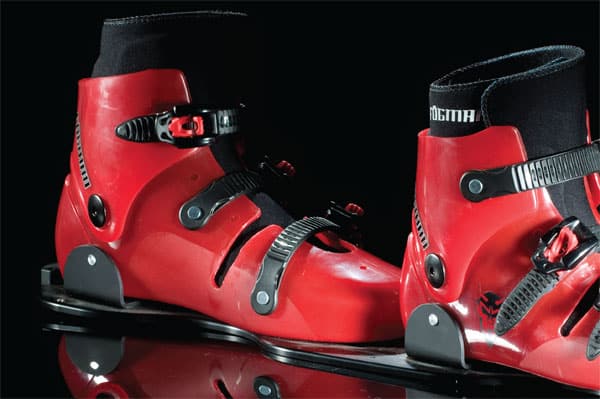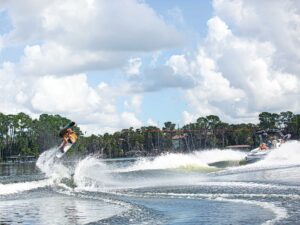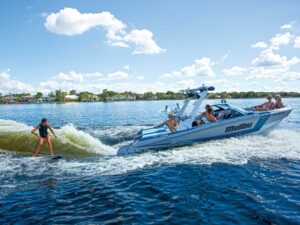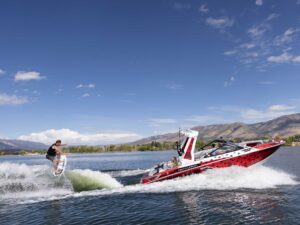
There is a lot of information out there about fin setup, but what do you really know about water ski boot setup? Although there are numerous boot setup opinions and the movements can be slightly different for every skier, here is a quick guide to maximizing your stance on a slalom ski.
Location on the ski
Anytime you get on a new ski, I recommend starting with the manufacturer’s suggested stock binding placement. To adjust outside of those parameters, you have the option of moving the boots forward and backward on the ski to create a different feel.
Forward movement
This puts you at a wider point on the ski and generally coaxes the ski into grabbing and initiating the turn sooner, but it will also hinder the ski from carrying out to a wider apex. Contrary to popular belief, moving the boots forward will not usually stop the ski tip from rising at the finish of the turn. Oftentimes, it will do just the opposite due to the fact that the ski starts biting too soon and loses speed.
Backward movement
Moving the bindings back on a ski can yield more outbound speed after your transition off the second wake because the wider fore body of the ski doesn’t engage into the turn as easily or quite as early. The speed created here allows the ski to carry out to the apex more effectively, and actually, the tip stays down better when the ski carries more speed into and through the turn.
Front boot relative to the rear boot
The distance between your boots can be established by your height. A skier over 6 feet tall may find that the boots need to be moved farther apart than the stock separation, whereas a skier shorter than 5 feet 9 inches may actually want the boots closer together than stock setup. Many skiers still think they need the heel of their front foot and the toe of their rear foot really close together. This isn’t always true, especially among people who are above average height with feet that are below average length. For these skiers, there may be a great deal of separation between the heel and toe. The major premise of spacing on your boots is that you want your feet far enough apart so you have a balanced and strong stance, but not so far apart that your knees don’t flex comfortably. A good rule of thumb to base your stance around is a 12-inch spread from the heel of your front boot to the heel of your rear boot. This is a good starting point for a skier of average height (somewhere in the range of 5 feet 10 inches). If you are shorter than 5 feet 10 inches, you may consider moving the boots a bit closer together. If you are taller than 5 feet 10 inches, you may consider spreading your boots a bit more.
Pivot principles
When pivoting your boots to the left or right, try to ensure your toes move an equal amount as your heel to opposite sides of the ski. These movements can range from neutral all the way to about three-eighths of an inch in either direction.
Front boot pivot
Left-foot-forward skiers who pivot their front boot counter-clockwise (right-foot-forward skiers: pivot clockwise), may feel as though their ski moves out into the offside turn a little more freely and allows them to stay more countered. This same setup may also help your onside turn be more fluid and progressive. Pivoting your front binding opposite of the conventional direction generally has adverse effects and isn’t recommended.
Rear boot pivot
I personally believe your rear foot should always be pivoted on the ski (righties: counter-clockwise/ lefties: clockwise). This position places less pressure on your trailing knee, and it also yields a more natural stance.









